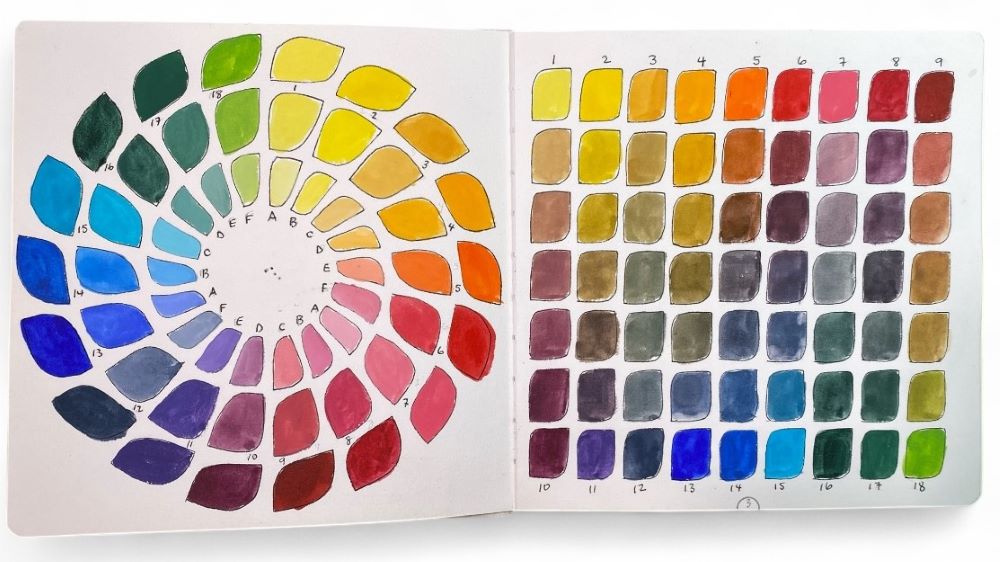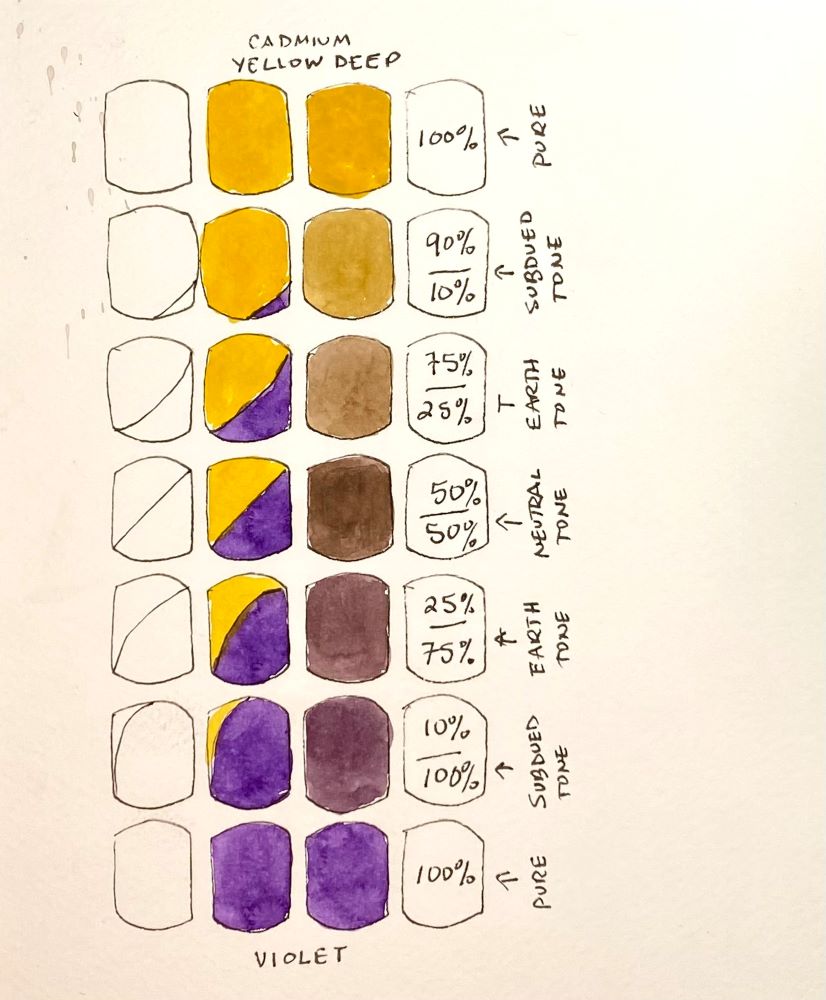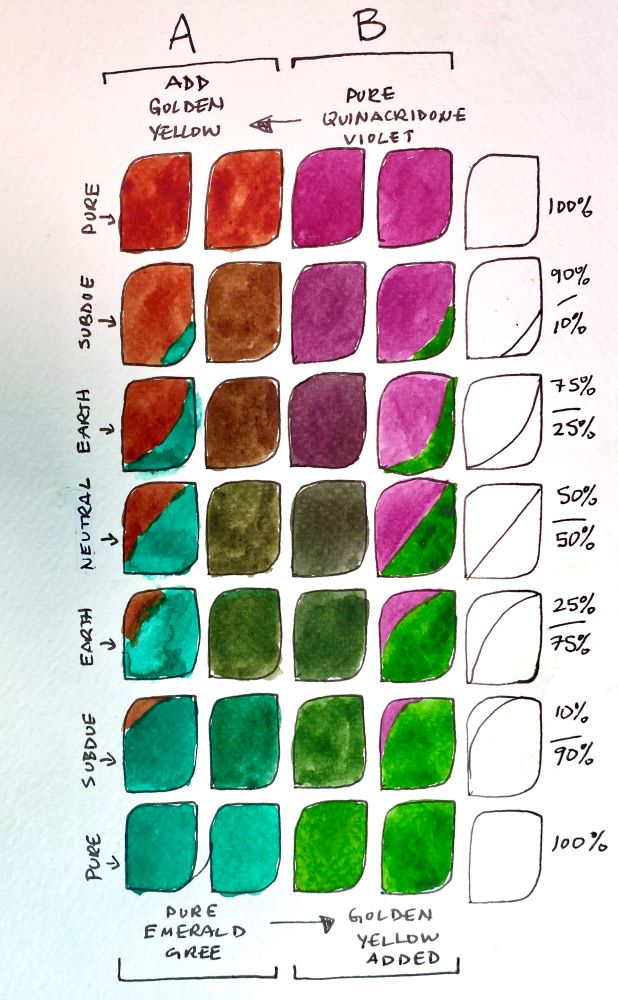The grid may be traced over two pages to fit a basic sketchbook (A5, 5×8”, 5.5×8.25”) or a medium accordion book. 9 columns across and 7 rows high fit easily on a 2-page spread or accordion book. Take note of the gutter or fold, then be careful to place your stencil so that no opening lands on the gutter.

Numbering Relates to the Colour Circle
The ‘ColourJot Grid’ is 9 wide and 7 high, labelled with numbers 1 – 9 on the top and 10 – 18 on the bottom to match the 18 colours numbered accordingly on the ‘ColourJot Circle’. How To

Now it is simply a colour mixing process to duplicate the mixes you made the first time. Then paint it on the numbered spot on the grid. Next, take the top and bottom colours and create a gradual transition between them. Here is an illustration of the ratios and percentages. These are for reference only. Mixing colours is done by eye; it is not an exact science, as all colours are different.

Isolating Nuances is the Key to Learning Colour
‘Opposite Colours’ are not necessarily true complementary colour combinations but simply colours that are across from each other on the 18-point ‘ColourJot Circle’. The example below illustrates how a little yellow added to Quinacridone Violet mixes very differently with pure Emerald Green and Emerald Green with a little yellow.

More Tips for Colour Mixing
- Always mix dark into the light as minutely as possible.
- On the palette, make a rich puddle of the lightest colour and gradually add dots of the darker colour until you get a new colour appropriate for the next spot on your chart.
- The objective of ColourJot is to mix and jot colours to create a gradual and stepped transition between the two colours.
- It is important to understand that the percentages are not exact physical measurements but rather a visual guess of what the next logical transitional colour should be.
More ways to use the ColourJot Grid Template
Many artists already do ‘colour swatching’ and ‘colour dating’ as part of their practice. ColourJot stencils may also be customized for these versions of colour-tracking. ColourJot stencils will add beauty, ease, and function to any art journal or art course.
Colour Swatching
Option 1: The top colour is full strength, and the next 6 steps are adding white or water to create 6 lighter versions of the colour.
Option 2: The middle colour is pure colour with three levels of white added to the top and three levels of grey or black added to the bottom.
Colour Dating
Pick any two colours and mix them in gradual increments to discover the range of secondary or tertiary colours.
Example Grid 1: Discover greens created by mixing two yellows with several different blues to discover the range of bright and earthy greens.
Example Grid 2: See two reds mixed with different blues to find earth tones as well as the best purples.
ColourJot art journals may be customized by users, and the grid stencil offers unlimited potential and fodder for all sorts of exploration of #colourjots.